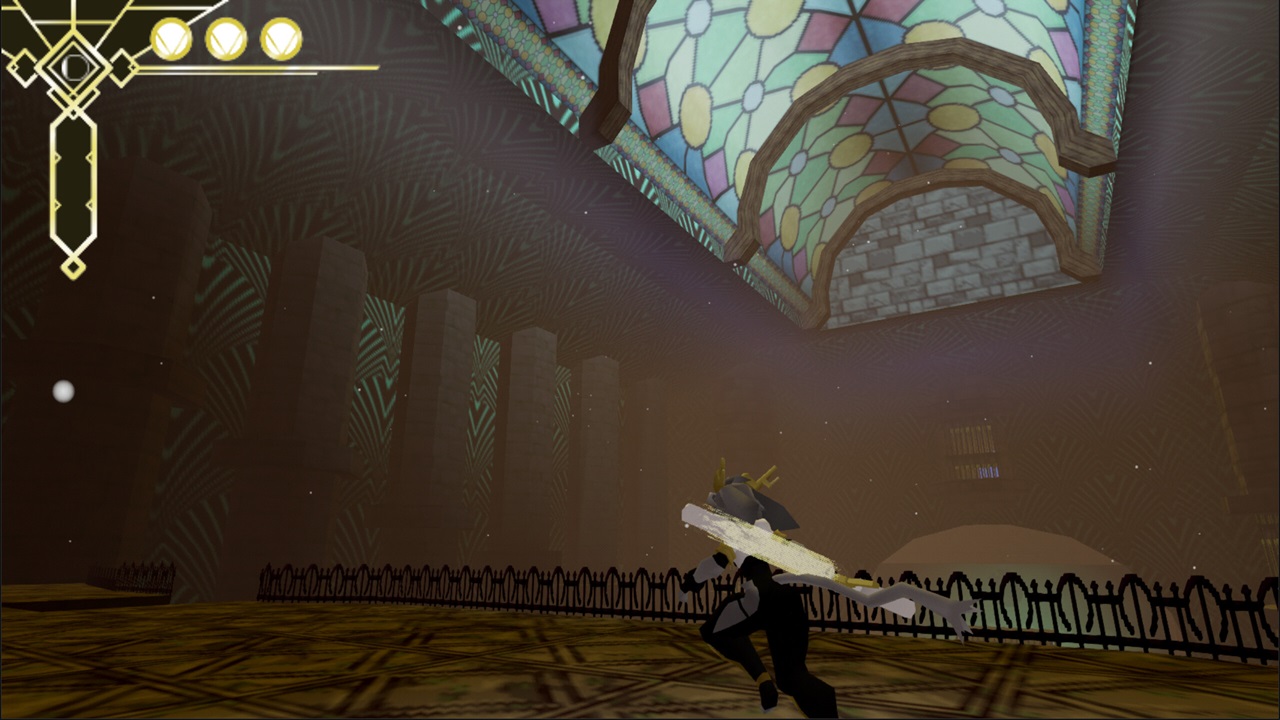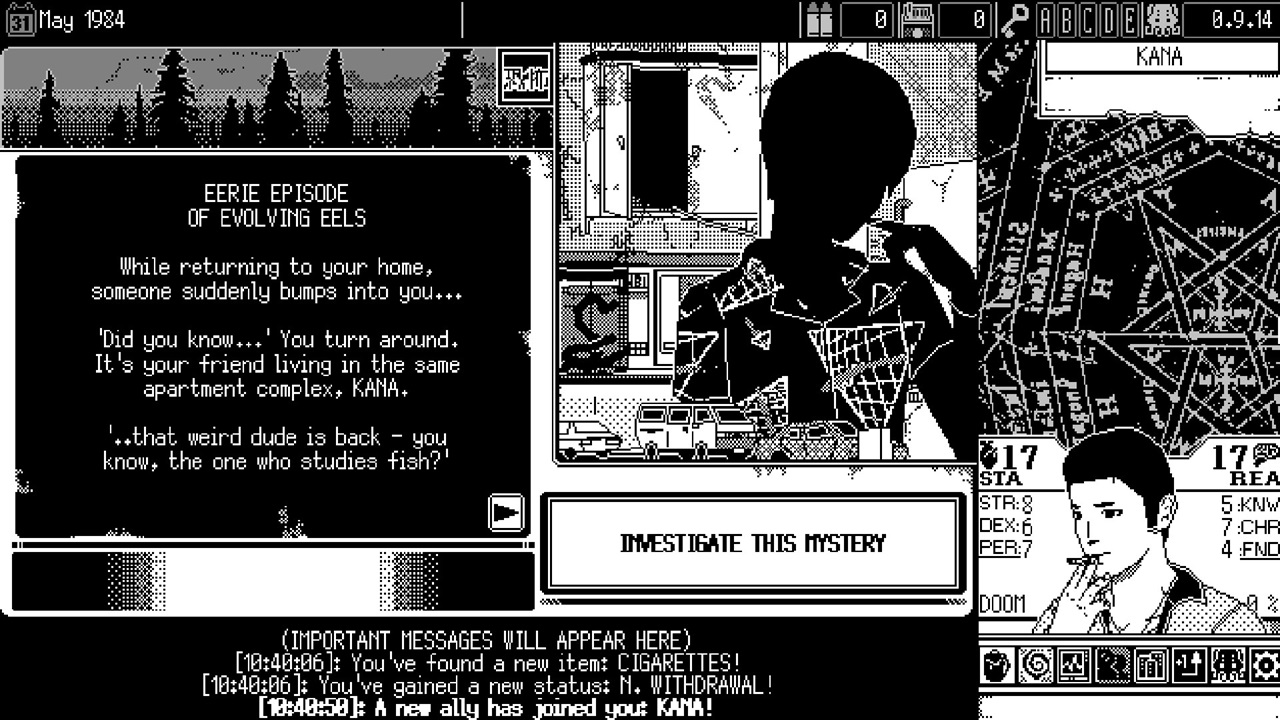Many indie titles in the past several years have taken visual inspiration from previous generations. Some draw from the NES and SNES eras, but lately more are taking cues from the PS1/N64 generation.
These distinctive visual echoes from years past have undoubtedly made it far easier to appreciate the aesthetic while playing something notably contemporary. At least, that’s how I view many of these games, since occasional visits to previous generations can sometimes be painful.
That said, some of the best games from the last several years have retro games to thank, be they platformers, survival horror, or RPGs. Some of these are the best in their respective years with others being quite underrated gems.

CrossCode
CrossCode is an ARPG with a 16-bit artstyle while retaining smoother combat and exploration. The store page makes its Zelda inspiration clear concerning how dungeons are designed around puzzle-solving and new equipment. Something that distinguishes itself from games like Link to the Past is the focus on ranged combat.
Protagonist Lea can attack at both close and long distances, with either method having a significantly faster pace than its inspirations. Couple this with a breadth of customization options for Lea’s build, and combat always stays satisfying as the player’s skill grows alongside Lea’s strength.
The story can be hit or miss as CrossCode follows the amnesiac protagonist throughout her journey across the CrossWorlds MMORPG, but the gameplay always remains engaging. Clocking in at around 30 hours for the main story, CrossCode is a lengthy and memorable retro adventure.

Dusk
Titles taking inspiration from ’90s FPS’s have gained traction, but arguably none do it better than Dusk. On top of being one of the best retro shooters in recent memory, it’s potentially one of the greatest shooters ever.
It takes visual cues from games like Blood but plays like an improved version of Quake. Players practically glide across levels using a mix of mid-20th-century weapons along with some more fantastical inclusions to decimate cultists and eldritch evils.
Each weapon is exhilarating to use, and I argue movement is better than even Doom Eternal still. At around 10 hours long, Dusk doesn’t overstay its welcome and leaves a better impression of boomer shooters than even its inspirations can offer. Despite only being around five years old, its popularity helped earn it a free HD remaster.

Katana Zero
Continuing my trend of focusing on titles released in the last five years is Katana Zero, a slick action-platformer with several interesting gimmicks. It plays almost like a 2D Ghostrunner, as the protagonist only dies in one hit and primarily uses a katana. What Ghostrunner doesn’t have is a dedicated slowdown mechanic that ties into the story.
What makes Katana Zero great is not only its mix of brutal and fast combat, but a genuinely intriguing story about identity, reliving traumatizing memories, and memory manipulation. It lives up to its neo-noir tag as an intertwining web of conspiracies forms with protagonist Zero in the middle.
It’s a surprisingly tragic and heartbreaking narrative that also happens to be one of the best indie platformers. A free DLC has been in production for years to conclude the story, and I still need it.

NORCO
I’m not much of a point-and-click adventure game fan, but NORCO enthralled me. Inspired by neo-noir adventure titles like Snatcher, NORCO takes the cyberpunk genre into Southern Gothic territory. It also happens to be one of the most melancholy games I’ve played recently.
The perpetually dimly lit Louisiana atmosphere, slow jazzy soundtrack, and contemplative dream-like story create a genuinely moving experience. Its pixel art style greatly adds to this, coming to life in the way ’90s graphic adventures did.
NORCO tapers off slightly toward the end of its four-to-six-hour adventure, but that does little to spoil the package. Its simple puzzles also make it approachable enough for non-gamer sci-fi and Southern Gothic fans.

Pseudoregalia
Pseudoregalia has some of the best movement I’ve ever seen in a platformer, and it stars a goat-rabbit girl. This 3D platformer takes visual cues from fifth-generation systems, namely the N64, while remaining structured as a Metroidvania.
Its structure is like any other as players guide protagonist Sybil across Castle Sansa to collect new abilities and powers. Almost every area is available to some degree at the start, but the setting only shines once some more abilities are acquired.
The entire movelist in Pseudoregalia is snappy and satisfying, doing a wonderful job at showing Sybil’s skills as an expert acrobat who is drip-fed upgrades throughout her roughly five-hour journey. What it ultimately does best is emulate a retro platformer’s aesthetics while outclassing its contemporaries.

Sea of Stars
Sea of Stars is among the more recent titles on this list, since it came out in August. Still, it made a splash in the same month Baldur’s Gate 3 launched for being a loving tribute to 16-bit RPGs while standing on its own as a solid game.
Combat takes place in turn-based battles, taking cues from Super Mario RPG‘s timing-based attack system. It’s honestly an underrated method for implementing turn-based combat, as it keeps encounters interesting when done right.
The art and narrative are arguably two of Sea of Stars‘ biggest draws. Its pixel art environments give the world an inviting feeling and lively portraits bring the cast to life. Helping is the story itself featuring an endearing set of characters who fit perfectly into a grand RPG adventure.

Signalis
Signalis is studio rose-engine’s debut title and is a remarkable work of retro sci-fi horror. It takes cues from various works ranging from Kubrick and Anno to create a PS1-styled nightmare with a heartbreaking narrative.
The basic premise sees Elster, a Replika who crashes on an icy planet and whose human partner is missing. Her only option is to venture into a nearby facility overrun by berserk Replikas and horrors beyond comprehension.
Despite taking visual inspiration from various anime and films alongside gameplay from retro games, Signalis is almost entirely its own beast narratively speaking. Elster’s tale of finding her partner is as surreal as it is soul-wrenching and unabashedly queer. This is a must-play for any fan of cosmic horror and dystopia sci-fi.

Vampire Survivors
Vampire Survivors was one of 2022’s biggest hits for a reason. At an incredibly cheap price, players get a simple but compelling action game. Its minimal graphics also help make it accessible to pretty much anyone who has a computer made in the last decade.
It also has an interesting premise for how simple it is. Vampire Survivors is a time-based survival title where players get the power to become stronger than a bullet hell boss. The only active thing you do is move around as progressively more projectiles and enemies flood the screen.
The number of enemies on screen is staggering by the end of a run and would feel overwhelming if not for the player’s scaling abilities. The incredibly engaging loop also helps as it’s impossible to resist trying at least one more time.

World of Horror
World of Horror officially launched this October, but fans have enjoyed the horror RPG for years in its Early Access builds. Taking cues from Junji Ito manga and 1-bit computer games, this horrifying title looks and plays like a cursed adventure title from the ’80s.
Despite its monochromatic color scheme, World of Horror‘s excellent art direction captures what makes Ito’s art so unnerving. Its structure of short runs with randomized adventures also emphasizes valuing every resource and every moment as all continuously dwindle.
As frustrating as randomization can be, it works in World of Horror‘s case as it helps further cement how hopeless the player’s fight is. They are facing off against incomprehensible cosmic horrors, and they aren’t going down without a fight.













Published: Oct 25, 2023 04:47 pm